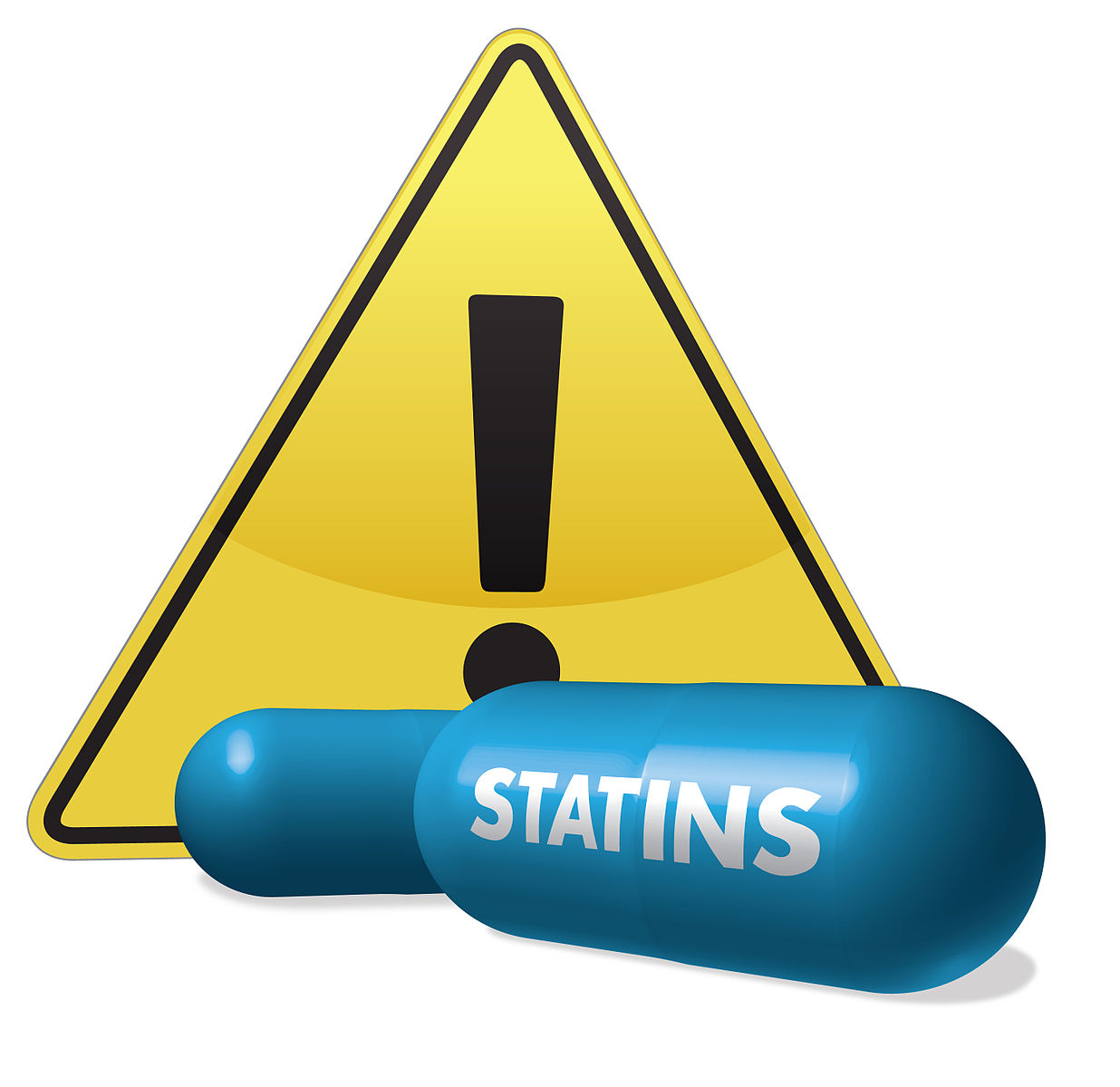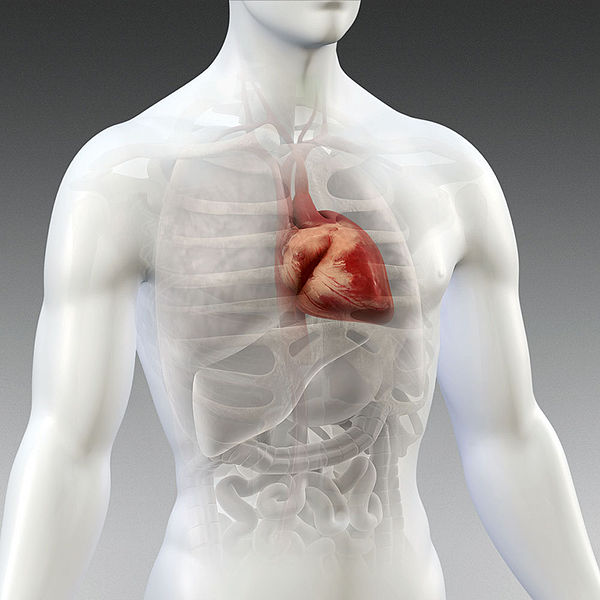 On many occasions, I’ve heard family, friends, and strangers alike who have expressed concerns over their low high-density lipoprotein (HDL) cholesterol levels. They’re worried something is wrong with them, and they want to do something about it. This often involves taking a pill to increase their HDL level.
On many occasions, I’ve heard family, friends, and strangers alike who have expressed concerns over their low high-density lipoprotein (HDL) cholesterol levels. They’re worried something is wrong with them, and they want to do something about it. This often involves taking a pill to increase their HDL level.
I thought it would be helpful to explain what HDL cholesterol is, how it works, and how well the approach of taking a pill to correct low HDL levels has worked so far in our quest for better heart health.
What is HDL Cholesterol?
HDL is a form of cholesterol referred to as “good” cholesterol. That’s because HDL cholesterol is associated with lowering our risk of cardiovascular disease (CVD).
This lower risk of CVD was first discovered back in the 1950s, but really came to light in 1977 when the famous Framingham Heart Study showed a correlation between low HDL levels and higher rates of cardiovascular disease and cardiovascular deaths.1 Conventional thought would then be that the higher our HDL levels, the more protection we have against CVD.
HDL levels have actually been shown to have an independent correlation on the risk of cardiovascular disease regardless of what a person’s low-density lipoprotein (LDL) cholesterol levels are.2 (You might recall that LDL cholesterol is referred to as our “bad” cholesterol, primarily responsible for increasing our risk for cardiovascular disease.) This independent correlation of HDL on CVD risk exists even when LDL levels are below the healthy or “safe” range of 70 mg/dL. So, a person could theoretically have a healthy or “safe” LDL cholesterol level and a low HDL level that still puts them at risk for cardiovascular disease.
This is our current line of thinking in conventional medicine. It’s why doctors, physician assistants, nurse practitioners, pharmacists, and other healthcare professionals are always eager to talk about the importance of getting your HDL levels above 40 mg/dL to the “normal” range.
What Does HDL Cholesterol Do in the Body?
HDL cholesterol carries out many functions in the body. It is far more complex than most people think. Scientists haven’t even unearthed the whole story yet, but below are some of the things we’ve learned about the role of HDL in the human body:1
Primary role of HDL – To transport excess cholesterol from the blood back to the liver to be disposed of from the body (via bile fluid) through the feces.
Secondary roles of HDL
- Potential anti-inflammatory properties on the cardiovascular system
- Antioxidant effects within the cardiovascular system
- Prevention of atherosclerotic plaques
- Stabilization of already formed atherosclerotic plaques (this prevents plaque ruptures and blood clots which can cause strokes and heart attacks)
The primary role of HDL transporting excess cholesterol back to the liver for disposal can be thought of with a simple analogy. If you’ve ever visited Bourbon Street in New Orleans, then you know after each night of partying there is a ton of trash left on the streets and sidewalks. Somebody has to clean this trash up. That somebody is the garbage men and their trucks that come by in the morning to make things look nice and clean again. HDL works in the same manner as these garbage men and their trucks. They “clean up” the extra cholesterol in our blood supply that doesn’t need to be there. This excess cholesterol is what puts us at risk for heart attacks and strokes.
Using Medication to Raise HDL Levels and Their Success Rates
 If low HDL levels are associated with higher rates of cardiovascular disease like the Framingham Heart Study tells us, then it would make sense to raise HDL levels. That’s what we try to do in medicine today using various medications and supplements. Does this work though?
If low HDL levels are associated with higher rates of cardiovascular disease like the Framingham Heart Study tells us, then it would make sense to raise HDL levels. That’s what we try to do in medicine today using various medications and supplements. Does this work though?
We can certainly raise HDL levels using pills. We’ve proven that. Three of the most common drugs used to do this are statins, fibrates (fenofibrate, gemfibrozil), and niacin. Statins raise HDL levels by approximately 5-10%, fibrates by 10-15%, and niacin by 25%.1
Despite these increases in HDL levels with drug therapy, we still do not see a reduction in cardiovascular death rates.1-3 This is unfortunate because the main reason any patient would want to take these medications is to not die from the disease they’re taking the medication for. I call this dying with better numbers.
In addition, as with any medication there are always side effects to consider. Statins carry the risk of muscle-related side effects. Niacin can cause flushing leading some people to discontinue it. Fibrates can cause gastrointestinal side effects (nausea, vomiting, diarrhea, etc.) and can also increase muscle-related adverse effects when taken together with statins.
Newer Agents Used to Increase HDL
While statins, fibrates, and niacin have been used traditionally to raise HDL levels, there are newer drugs used to treat this condition as well.
CETP Inhibitors
Cholesterol ester transfer protein (CETP) inhibitors (torcetrapib, dalcetrapib, anacetrapib, evacetrapib) are the latest line of HDL modifiers being tested on the market. These medications work by inhibiting the transfer of cholesterol from HDL to LDL & VLDL (very low density lipoproteins).4 If cholesterol is transferred to LDL & VLDL particles it makes them more atherogenic, meaning they are more likely to clog our arteries and cause heart attacks and strokes. CETP inhibitors prevent this from happening and, theoretically, would therefore prevent fatty plaques from clogging our arteries leading to heart attacks and strokes.
CETP inhibitors have been found to increase HDL levels and lower LDL levels, giving us the perfect recipe for lowering cardiovascular disease. The increase in HDL levels is anywhere from 31%-138% and the reduction in LDL levels is between 2%-40%.4 Despite these favorable numbers though, CETP inhibitors have shown no reduction in heart attacks, strokes, coronary heart disease deaths, or deaths from any causes thus far.2,5 In fact, torcetrapib actually showed an increase in the risk of death in clinical trials.4 This is exactly the opposite of what we want to have happen.
HDL Levels a Marker of Unhealthy Lifestyle
 This month in the Journal of the American College of Cardiology, a study was published examining HDL levels in individuals and their corresponding death rates.6 Researchers looked at over 631,000 residents from Ontario, Canada to determine whether HDL levels affected both cardiovascular and non-cardiovascular death rates.
This month in the Journal of the American College of Cardiology, a study was published examining HDL levels in individuals and their corresponding death rates.6 Researchers looked at over 631,000 residents from Ontario, Canada to determine whether HDL levels affected both cardiovascular and non-cardiovascular death rates.
There was a correlation between HDL levels and death rates. Patients with low HDL levels (<50 mg/dl in women and <40 mg/dl in men) had higher rates of cardiovascular deaths, cancer-related deaths, and other deaths.
The study also found that patients with high HDL levels (> 70 mg/dl in men and >90 mg/dl in women) had increased rates of cancer deaths and non-cardiovascular deaths.
This information regarding an increase in cardiovascular-related deaths and low HDL levels is not new. We saw this in several previous studies like the Framingham Heart Study mentioned earlier in this article. However, this is the first time there has been a correlation shown between low and high HDL levels and non-cardiovascular deaths, including cancer deaths. This further muddies the water when it comes to understanding HDL’s role in not only heart health, but also overall health.
The authors of this study concluded that maybe HDL levels are more of a marker of our lifestyle choices than anything else. Researchers found that “lower HDL-C levels were associated with a progressively higher proportion of individuals who were socioeconomically disadvantaged and had less healthy lifestyle behaviors, more cardiac risk factors, and a greater burden of medical comorbidities.” They went on further to suggest that “HDL-C level is a marker of poor general health and may not be an independent modifiable risk factor specifically for CV disease.”
In other words, maybe we in modern medicine have been trying to use HDL levels as a reason for medicating patients when we should be focusing on helping them make healthier diet and lifestyle changes to improve their heart health.
Conclusion
While we have uncovered an association between low HDL levels and higher rates of cardiovascular disease, there is still much to understand about this complex relationship. Raising HDL levels with drugs has not yet benefited patients in terms of reducing heart attacks, strokes, and cardiovascular death rates like we’d hoped for.
Instead of providing more “garbage men and garbage trucks” to clean up the excess cholesterol in our blood supply, maybe a better idea would be not to put the “garbage” there in the first place. This can be accomplished by adopting a whole foods, plant-based diet and staying away from the meat- and dairy-heavy Standard American Diet. There simply is no harm in eating vegetables and only good things come to those who do.

If you like what you see here, then you’ll LOVE my daily Facebook and Twitter posts! Also, don’t forget to sign up for my Free Online Mailing List to get all the latest updates from the Plant-Based Pharmacist!
Check out my book, The Empty Medicine Cabinet, to start your journey towards better health. This step-by-step guide leads you through many of today’s common chronic diseases (heart disease, obesity, diabetes, cancer, and more), giving you the facts on food versus medication in treating these medical conditions. The book also contains an easy-to-follow guide on how to adopt a whole foods, plant-based diet as a part of an overall lifestyle change, producing the best possible health outcomes for you and your family. Hurry and get your copy today!
References:
1 Ali KM, Wonnerth A, Huber K, Wojta J. Cardiovascular disease risk reduction by raising HDL cholesterol – current therapies and future opportunities. British Journal of Pharmacology. 2012;167(6):1177-1194.
2 Keene D, Price C, Shun-Shin MJ, Francis DP. Effect on cardiovascular risk of high density lipoprotein targeted drug treatments niacin, fibrates, and CETP inhibitors: meta-analysis of randomised controlled trials including 117 411 patients. The BMJ. 2014;349:g4379.
3 Kühnast S, Fiocco M, van der Hoorn JW, et al. Innovative pharmaceutical interventions in cardiovascular disease: Focusing on the contribution of non-HDL-C/LDL-C-lowering versus HDL-C-raising: A systematic review and meta-analysis of relevant preclinical studies and clinical trials. Eur J Pharmacol. 2015 Sep 15;763(Pt A):48-63.
4 Mabuchi H, Nohara A, Inazu A. Cholesteryl Ester Transfer Protein (CETP) Deficiency and CETP Inhibitors. Molecules and Cells. 2014;37(11):777-784.
5 Kosmas CE, DeJesus E, Rosario D, Vittorio TJ. CETP Inhibition: Past Failures and Future Hopes. Clinical Medicine Insights Cardiology. 2016;10:37-42.
6 Ko DT, Alter DA, Guo H, et al. High-Density Lipoprotein Cholesterol and Cause-Specific Mortality in Individuals Without Previous Cardiovascular Conditions: The CANHEART Study. J Am Coll Cardiol. 2016 Nov;68(19):2073-2083.


.jpg)
Pingback: Is Higher High Density LipoProtein Better? - Gary's Plant-Strong Nutrition Blog
Pingback: Anti-cholesterol agents extracted from wild plants | IEyeNews
I am totally wfpb no oil and have great numbers, however my hdl is below 40. Does that mean that because there’s little need for cleanup (garbage in blood) my hdl is not needed as much, thus low?
Such a great article! The “garbage men and garbage trucks” comparison is very helpful. If there is less garbage, it stands to reason that fewer garbage trucks would be necessary. My HDL’s went down after adopting a plant-based lifestyle, and it just makes sense!